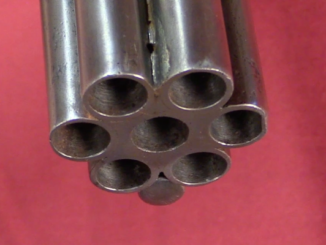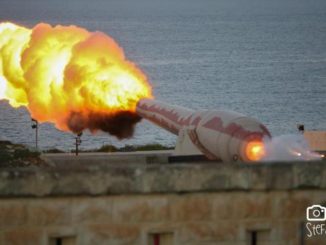When Britain entered the First World War, it had no formal sniper program. Germany was the first combatant to train and utilize snipers, and their effectiveness quickly convinced the British military that a similar program was necessary. Initially a wide variety of rifles were put into service, including many scoped hunting rifles send form the British Isles. These were of little use, as they were in non-standard calibers, and not generally rugged enough to survive the rigors of WW1. The first uniform equipment purchased and used were several versions of Galilean optical sights.
Introduced into competition shooting at Bisley before the war, this is a type of magnified sight which uses independent lenses mounted to the front and rear of a rifle (some fitted to the SMLE rear sight and some attached to the back of the receiver). This was low profile, relatively inexpensive, and quick to put into service, but the sights themselves were severely handicapped compared to modern telescopes. They offered about 2.5x magnification and a very large depth of field, but at the cost of a very narrow field of view and small eyebox. They were also easily dirtied, and the front aiming point was often difficult to discern against the background image.
The four main models purchased by the British were Lattey, Neill, Martin, and Gibbs. The model in this video is a Martin, patented by J.E. Martin of Glasgow. Once proper telescopes became available, they rendered the Galilean optics obsolete, and very few survived the war.




Even the Type 97’s offset scope with fixed magnifying power seems a better idea now, as it gave the user a wide field of view, a necessity in target acquisition. I could be wrong…
A perfect example of ‘its this or nothing’ They being obtainable when conventional telescopic sights – at least in anything like sufficient numbers, were not (1914 Germany had a near monopoly on these and other manufacturers e.g. British or US very much modest-minor in comparison) and both ingenious and ‘did’ work. Though even at the time recognized as inferior. The extent of this (particularly in the field / operationally) not being recognized until they were in service.
If we’re referring to Zeiss AG’s predecessor company, yes, Germany nearly had a monopoly on good optics along with good cameras. And even so, you’d be hard pressed to get better lenses without good lens makers (where did they go!?). Zeiss is still on top, if I’m not mistaken. Oh, and use of firearms optics in military doctrine on the Allied side had yet to catch up with the technology available at the time.
Robert Maze actually did some firing tests of several Enfield rifles with these sights, which was written up in the American Society of Arms Collectors Bulletin 115, (Spring 2017). However it is on the members only side of the ASAC site for a while longer before being released for public access. Very interesting.
Lots of other articles ARE open for public access at http://AmericanSocietyofArmsCollectors.org
Better late than never. – I have read the aforementioned article:
Bob Maze: GreatWar Galilean ‘Optical’ Sniping sights – Past and Present (1915 use and 2015 Trials)
https://americansocietyofarmscollectors.org/wp-content/uploads/2022/04/2017-B115-Great-War-Galilean-Optical-Sniping.pdf
…and I simply love its serious and methodical approach. – Thank you!